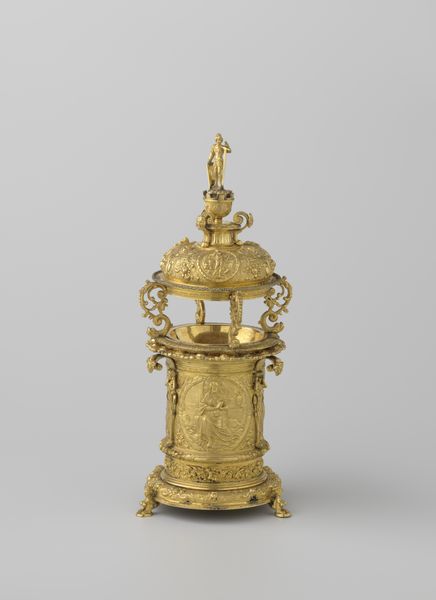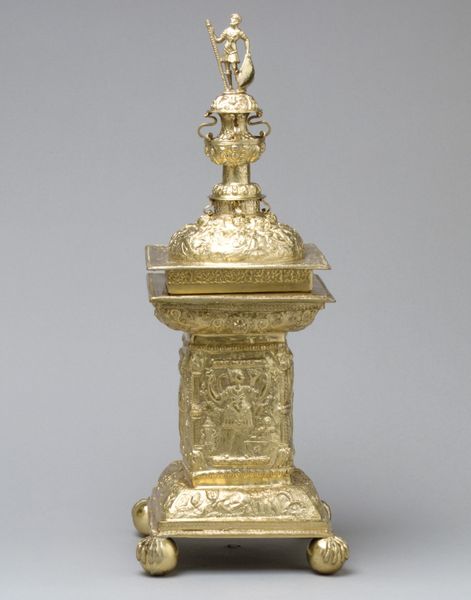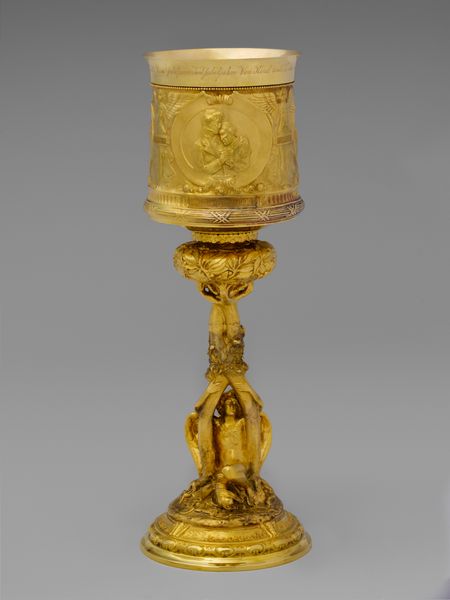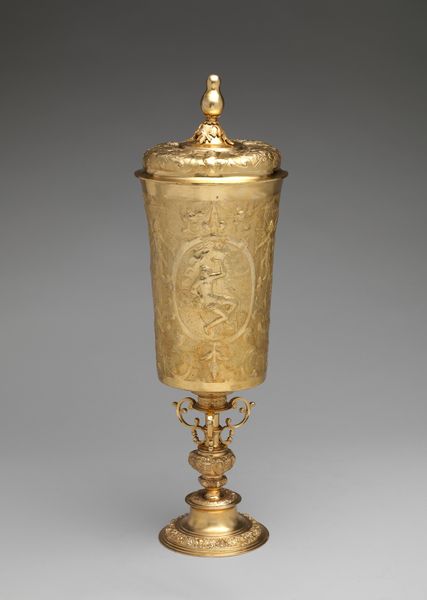
Dimensions: Overall: 23 1/8 × 11 5/8 × 8 1/8 in. (58.7 × 29.5 × 20.6 cm)
Copyright: Public Domain
This gilt electrotype Flagon was created by Elkington & Co. Electrotyping was a process of using electricity to deposit a thin layer of gold onto a base metal. The result was an object that had the appearance of solid gold, but at a fraction of the cost. This technique allowed manufacturers to produce luxury goods for a wider market, blurring the lines between fine art and industrial production. The intricate details and classical motifs on this Flagon would have required skilled artisans to create the molds and prepare the metal for plating. The shimmering surface speaks to the Victorian era's fascination with opulence and display. Although mass-produced by industrial standards, each piece still required considerable hand finishing and artistry to achieve its lustrous effect. Electrotyping democratized access to luxury goods, while also raising questions about authenticity and value in a rapidly industrializing world. By examining the materials, methods, and context of its creation, we can understand the Flagon not just as a decorative object, but as a cultural artifact that reflects the social and economic forces of its time.
Comments
No comments
Be the first to comment and join the conversation on the ultimate creative platform.













